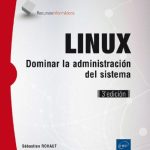 The world of UNIX and Linux server operating systems right now is anything but boring. However, that may not be the best thing, especially for enterprises that want a background of stability and certainty when they choose a server OS to power their business.
The world of UNIX and Linux server operating systems right now is anything but boring. However, that may not be the best thing, especially for enterprises that want a background of stability and certainty when they choose a server OS to power their business.
If you use Sun UNIX then you know all about this. The OpenSolaris project just recently disintegrated into nothing of a long run of uncertainty and was replaced by something probably based on the Illumos project like the OpenIndiana spork. Users of Solaris weren’t greeted with such a rude awakening though. Their enterprise OS hasn’t actually gone away. They have, however, come to terms with the fact that UNIX is now a product of Oracle which means it is being developed along a very very different style then it was under Sun.
People who have encountered Suse Linux Enterprise Server (SLES) which is under Novell and is also one of the two leading open source server distributions. The server itself runs just find but being owned by Novell, which is known for being a little chaotic, has cast a decent shadow over the product.
On a lighter side, if you are a Red Hat shop you can rest assured that you are running the number one open source server OS from a dependable and stable company. In fact, Red Hat Enterprise Linux (RHEL) is respected so highly that Oracle uses it as a basis for its own Linux offering.
But how long will this last? Oracle has decided to drop Red Hat compatibility in its Oracle Linux Product after announcing the Oracle Unbreakable Kernel for Oracle Linux at Oracle OpenWorld last week. According to Oracle it is a «fast, modern, reliable kernel that is Optimized for Oracle software and hardware». Oracle also promises that the new kernel will offer a 75% performance gain demonstrated in OLTP performance tests over a Red Hat compatible kernel, a 200% speedup of Infiniband messaging and 137% faster solid state disk access.
It is rumored that VMware may by Novell’s Linux business and if that does happen, then Red Hat is going to be a minnow among sharks in the server OS space going forward. To put it into perspective, Solaris is a part of a $140 billion Oracle Corporation while SLES would be a part of a $36 billion VMware. as for Windows, AIX and HP-UX, they are each owned by corporations worth some $220 billion (Microsoft), $166 billion (IBM) and $90 billion (HP) respectively. Red Hat is definitely the odd one out with only $7 billion.
That leaves IBM, HP and Microsoft. All these companies are fairly predictable and boring but they are also huge. However, with all that is going on in the enterprise operating systems market at the moment, big, boring and predictable may be the perfect thing for many potential customers.

